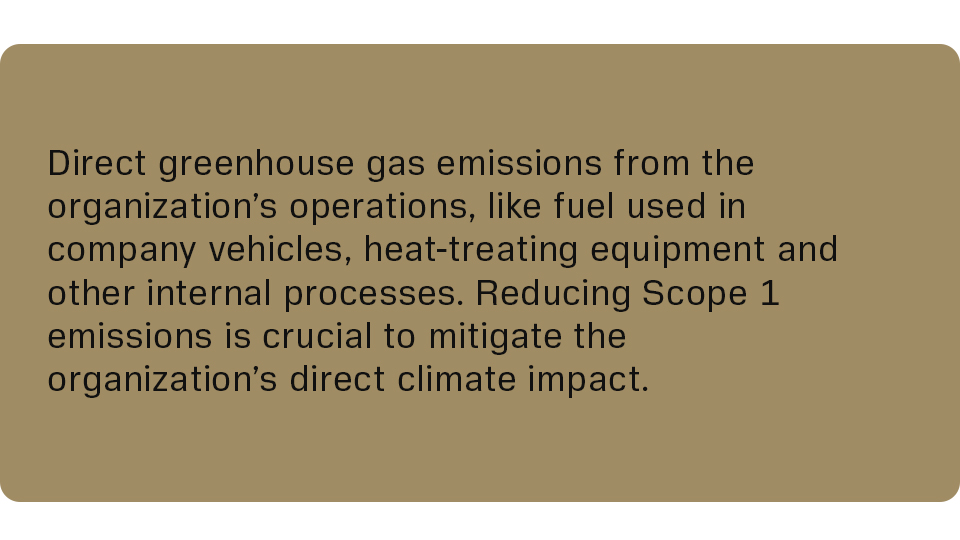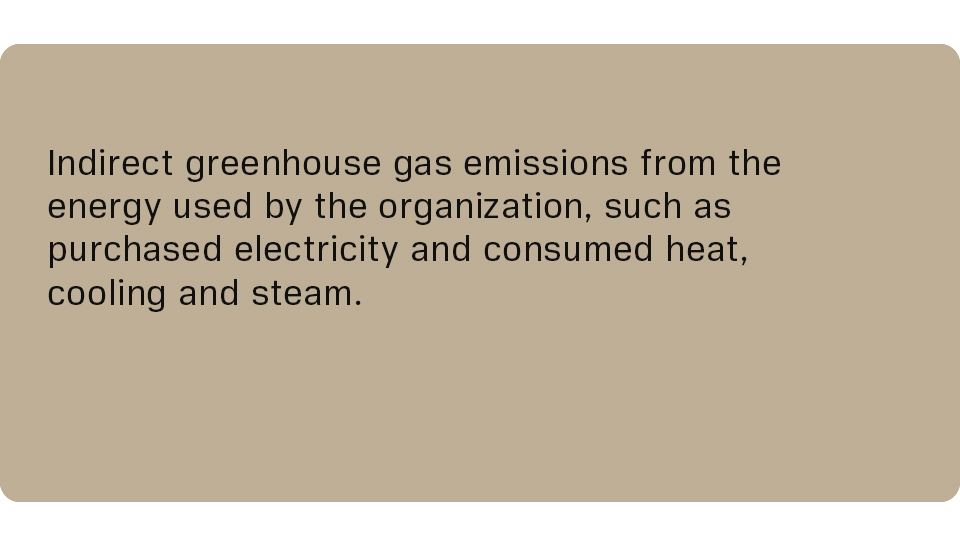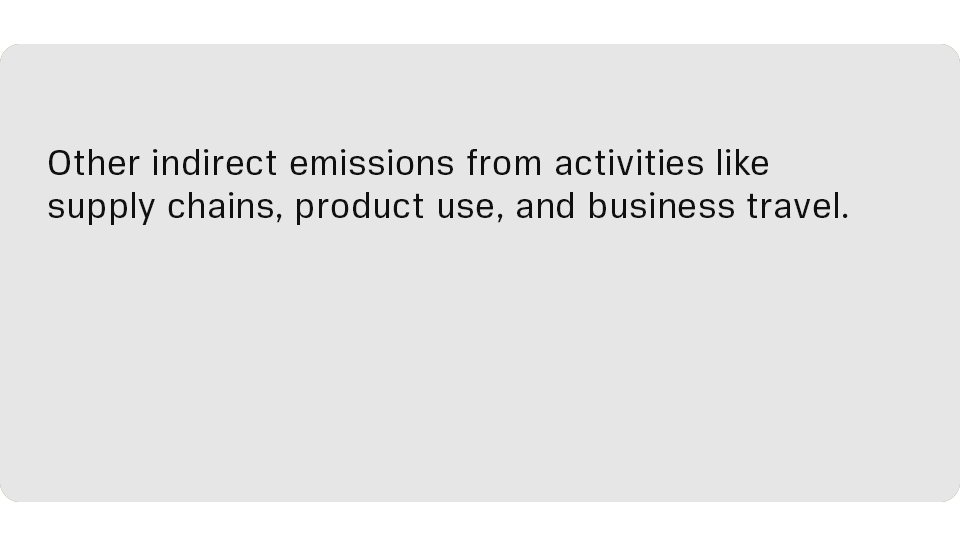We shift climate
As previously mentioned, climate action is one of the Sustainable Development Goals established by the United Nations in 2015. The official mission statement of the goal is “Take urgent action to combat climate change and its impact”. Let us now explore what that means.

How to measure impact on climate change
The Greenhouse Gas Protocol (GHG Protocol) is a global standard for measuring and reporting greenhouse gas emissions from businesses and other organizations. It was developed by the World Resources Institute (WRI) and the World Business Council for Sustainable Development (WBCSD) and has become a foundational framework to help organizations understand and manage their climate impact emissions.
The GHG Protocol categorizes emissions into three ”scopes” to provide a more comprehensive picture of the organization’s climate impact. By measuring and reporting emissions within Scope 1, Scope 2, and Scope 3, the company gains a more complete understanding of its climate impact and can identify opportunities to reduce its emissions, improve its environmental performance, and work towards achieving climate and sustainability goals.

Scope 1
 Reducing scope 1 emissions:
Reducing scope 1 emissions:
Vehicle fleet efficiency: Invest in fuel-efficient vehicles, transition to lower or zero-emission vehicles like electric cars and adopt fuel-efficient driving techniques to reduce vehicle emissions.
Internal process optimization:
Identify and implement energy-efficient technologies and processes to reduce emissions from internal facilities and production processes.
Scope 2
 Reducing scope 2 emissions:
Reducing scope 2 emissions:
Renewable energy usage: Purchase electricity from renewable sources like solar or wind farms to reduce indirect emissions from energy use.
Energy efficiency:
Implement energy-efficient technologies and processes like LED lighting and smart energy management systems to reduce total energy consumption and Scope 2 emissions.
Purchase of fossil-free electricity through direct contracts with energy providers or by guarantees of origin that ensure the electricity is sourced from fossil-free sources (and assure additionality of fossil-free electricity to the grid).
Scope 3
 Reducing scope 3 emissions:
Reducing scope 3 emissions:
Work with suppliers to reduce their emissions and choose low-carbon footprint suppliers to decrease scope 3 emissions from the supply chain.
Design of sustainable products:
Design products to be energy-efficient, sustainable, and recyclable to reduce emissions from product use.
The scope 3 upstream emissions are indirect emissions created from activities before the resources enter our direct control such as production of raw materials and transports.
The scope 3 downstream emissions are related to outbound transport and the use of the products. Rock tools products do not emit greenhouse gas emissions themselves (it is the machines using them that do) therefore our scope 3 downstream emissions are very low.
Sandvik Rock Tools follows four targets in the focus area “We shift climate”:
- Climate impact from steel suppliers
- Fossil free electricity supply
- Air freight finished goods
- Business air travel
Climate impact from steel suppliers

Key Performace Indicator (KPI) definition
The KPI “Climate impact from steel suppliers” refers to the total upstream scope 3 emissions from the steel used to produce Sandvik Rock Tools products. Emissions from the transport of the steel to the production is also included. The target is to decrease greenhouse gas emissions from the steel used in Sandvik Rock Tools products by 25% until 2025.
How do we achieve this?
The target for greenhouse gas emissions from our steel suppliers is absolute and it is important for Sandvik Rock Tools to have an active and continuous dialogue with suppliers to make sure that they act to reduce their greenhouse gas emissions. By increasing the proportion of steel from scrap-based suppliers, the GHG emissions will decrease both per ton purchased steel and in total.
Result in 2023
The upstream greenhouse gas emissions from the steel used in Sandvik Rock Tools decreased with 15% in comparison with our base year of 2019 and even if we see an impact from volume there is a clear progress in greenhouse gas emissions per purchased tom of steel year by year.
Focus in 2024
Sandvik Rock Tools sourcing team continues with active dialogue with steel suppliers on their plans to reduce greenhouse gas emissions. Sourcing steel from scrap-based suppliers remains important to reach our 2025 greenhouse gas emissions reduction targets. The target for 2024 is 20% reduction compared to 2019.
Fossil free electricity supply

Key Performance Indicator (KPI) definition
The KPI “Fossil free electricity supply” is defined as the percentage of electricity that is provided from fossil free electricity production.
How do we achieve this?
Our production units use electricity as their main energy source. By using fossil free electricity, Sandvik Rock Tools can decrease scope 2 greenhouse gas emissions. Our production units in Sweden have since many years been running with fossil free energy and our units in India became fully fossil free in 2022 with their mix of solar energy from own sources and green energy from the grid. In 2023 an important milestone was reached since our production unit in Wuxi China started to be fully supplied with renewable, fossil free energy. Hereby all our production units were running on fossil free energy from the last quarter of 2023.
Result in 2023
We had great progress in this measure and reached 93% of our electricity that came from fossil free sources. So, we exceeded the target of the year of 89%.
Focus in 2024
Currently we now have fossil free electricity supply in place for all our production units so the target to be achieved is 100%.
Air freight finished goods

Key Performance Indicator (KPI) definition
The KPI “Air freight finished goods” monitors the weight percentage of our transports from our production units to warehouses that take place with airfreight.
How do we achieve this?
Distribution of our finished products take place with several different transport modes such as road, air, train, and container ships. However, these different ways to transport vary greatly in terms of their impact on the environment. The biggest difference we see between airfreight and transport by container ships where the latter have a 99% less emissions of greenhouse gas. To reduce our emissions and reach our long-term targets it is therefore of essence to minimize the airfreight.
Result in 2023
The result achieved 2023 was 3.7% which exceeded the target of 5%. This was achieved through a stabilization of the global freight situation (compared to the turbulent year of 2022) as well as better control of our demand planning and supply chain performance.
Focus in 2024
The target for 2024 is set to 3,5% air freight. There are still challenges in the global logistics chains that need to be balanced with effective supply planning and inventory management.
Business air travel

Key Performance Indicator (KPI) definition
Annual greenhouse gas emissions caused by business air travel is accounted for in the KPI “Business air travel”.
How do we achieve this?
Business air travel does not have the most significant climate impact but reducing business air travel also effects our sustainability culture.
Employees should travel when it is needed, but unnecessary air travel must be avoided. Digital way of working should continue to be developed.
Result in 2023
In 2023 the business travel remained at a very low level, and we reached 84% reduction in relation to our base year of 2019.
Focus in 2024
We will continue to track business air travel on a quarterly basis and efforts to achieve cultural changes to reduce the organization’s travel habits continue. However, meeting our customers and other key stakeholders remains important and therefore, the target for 2024 and 2025 is to maintain the low level of business air travel below 60% compared to the base year of 2019.